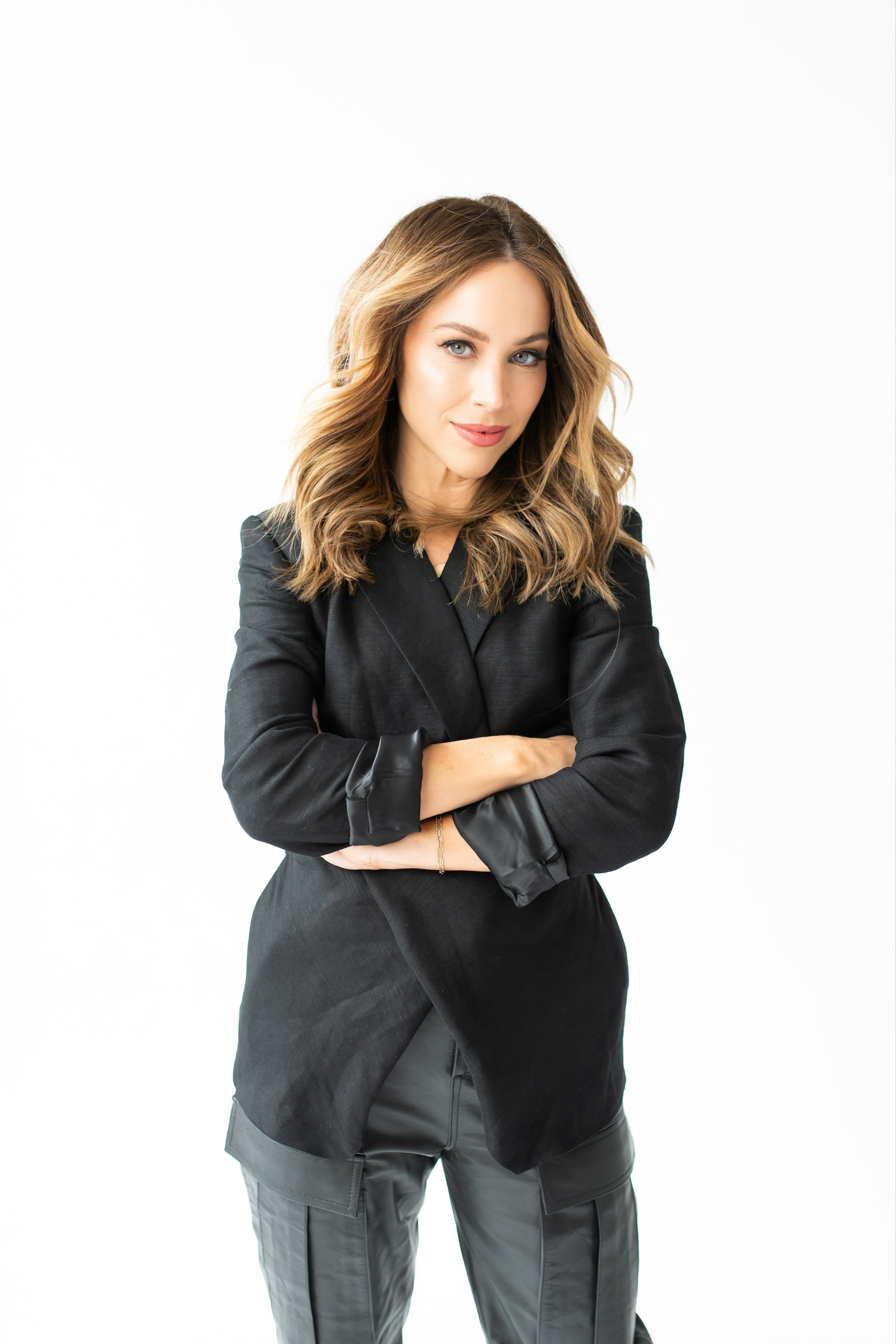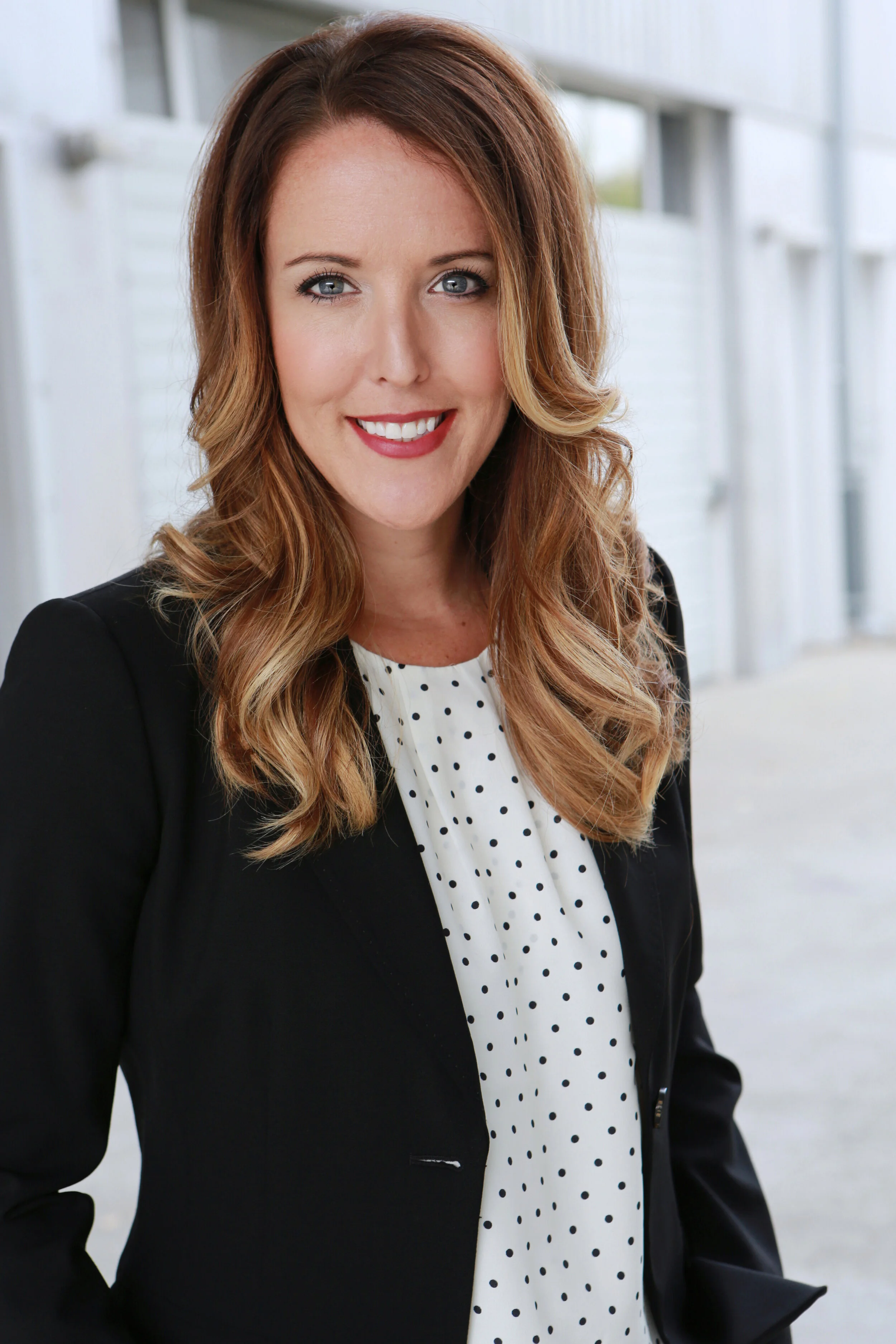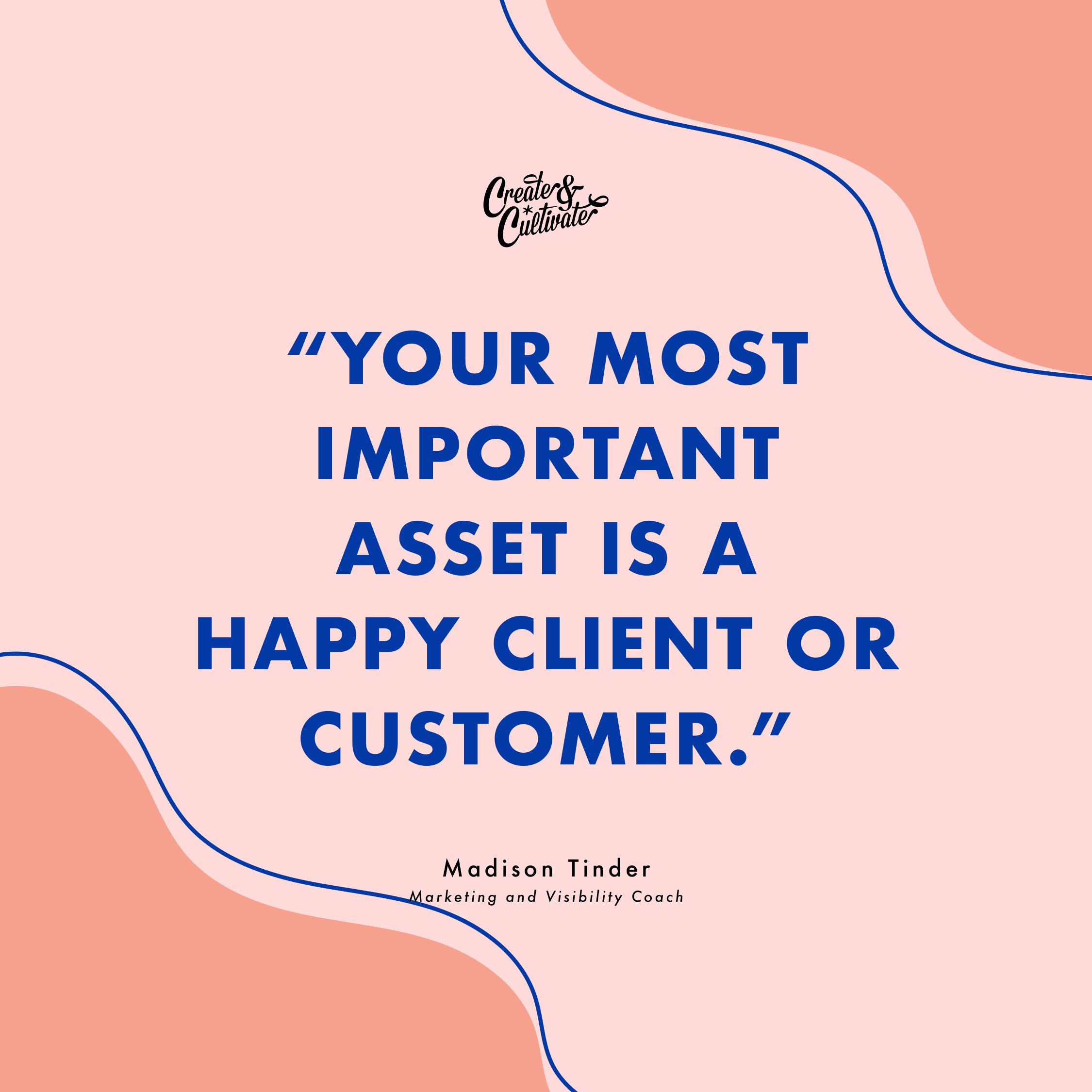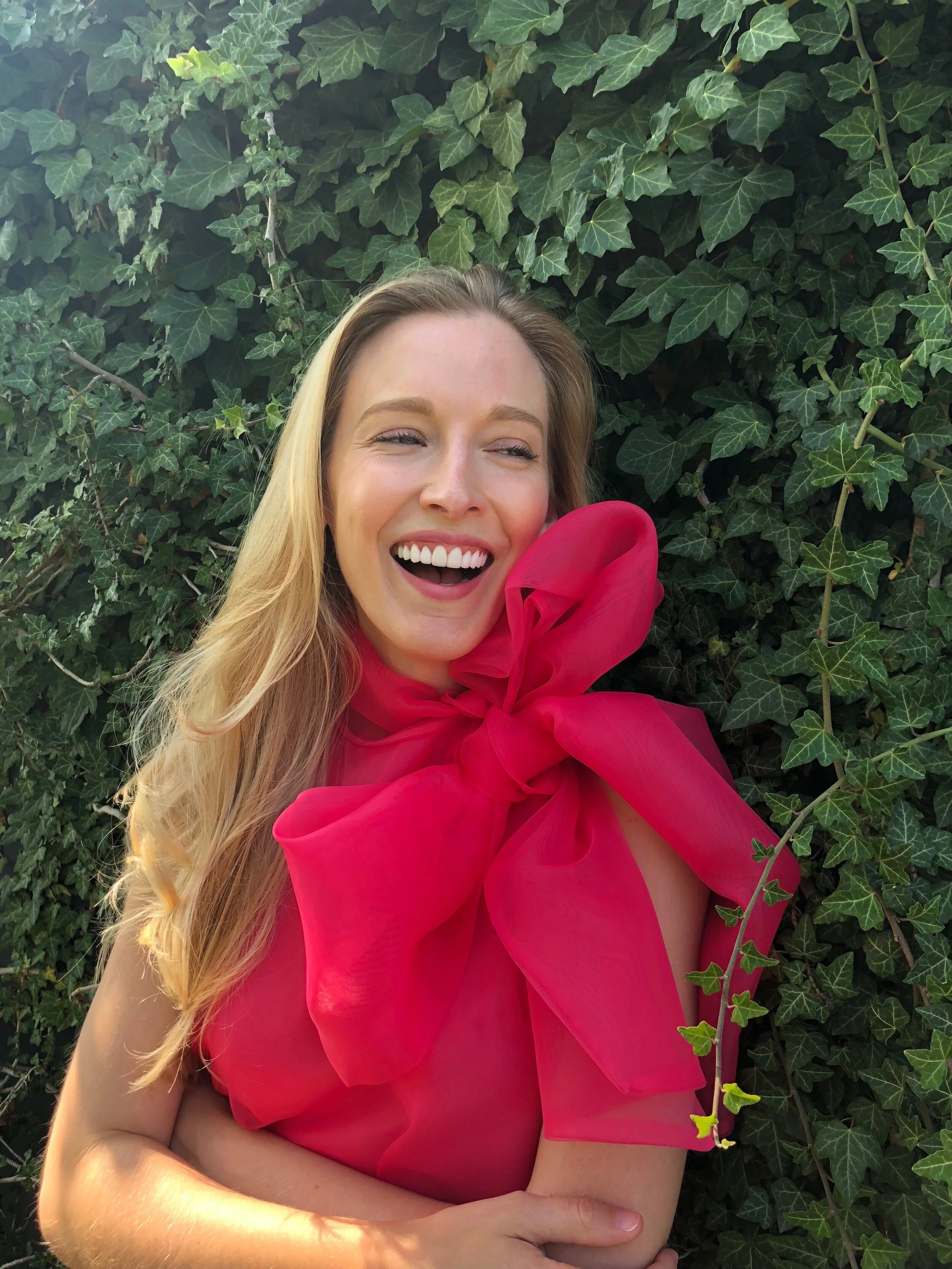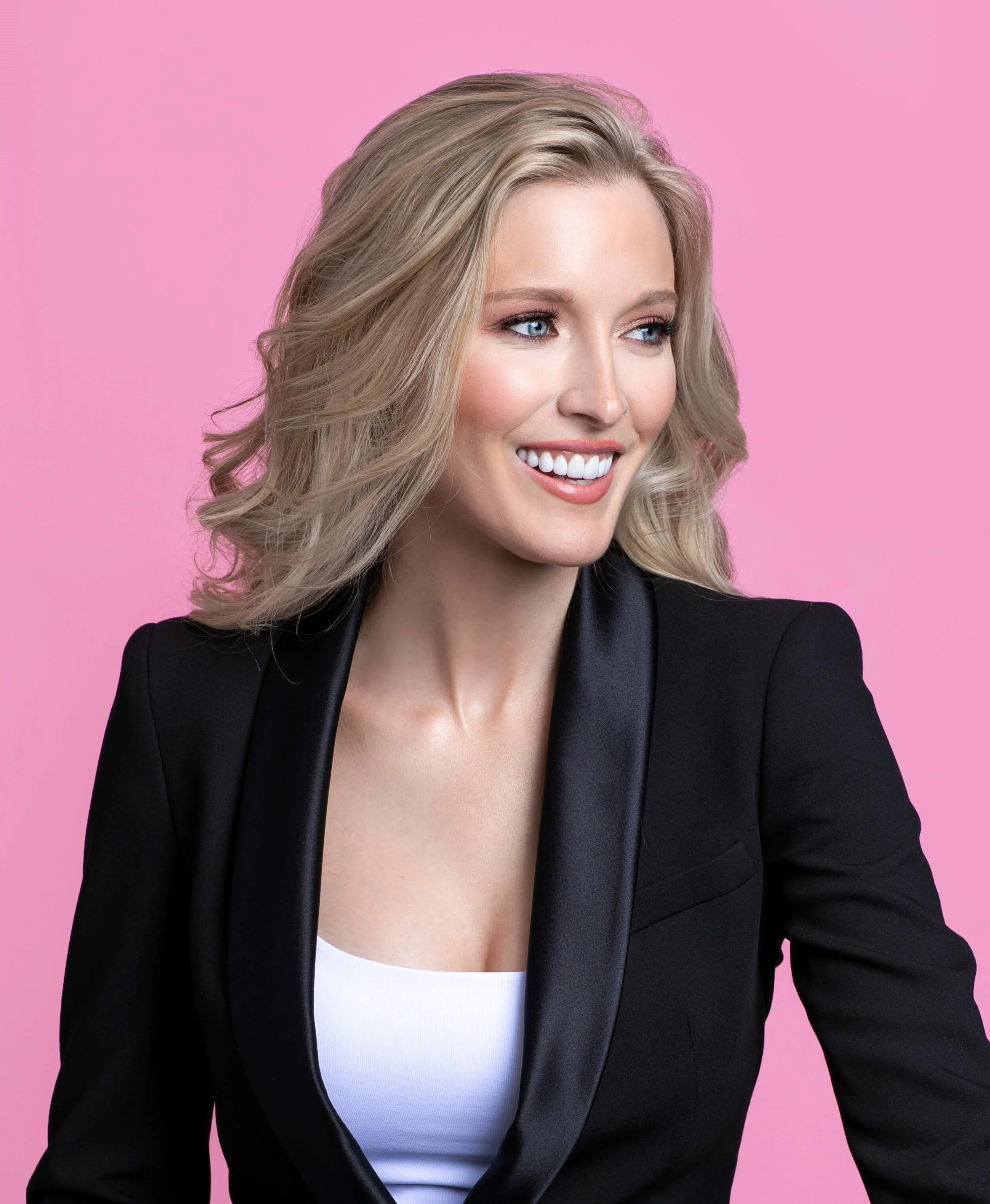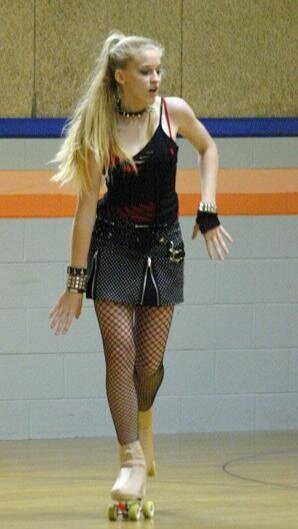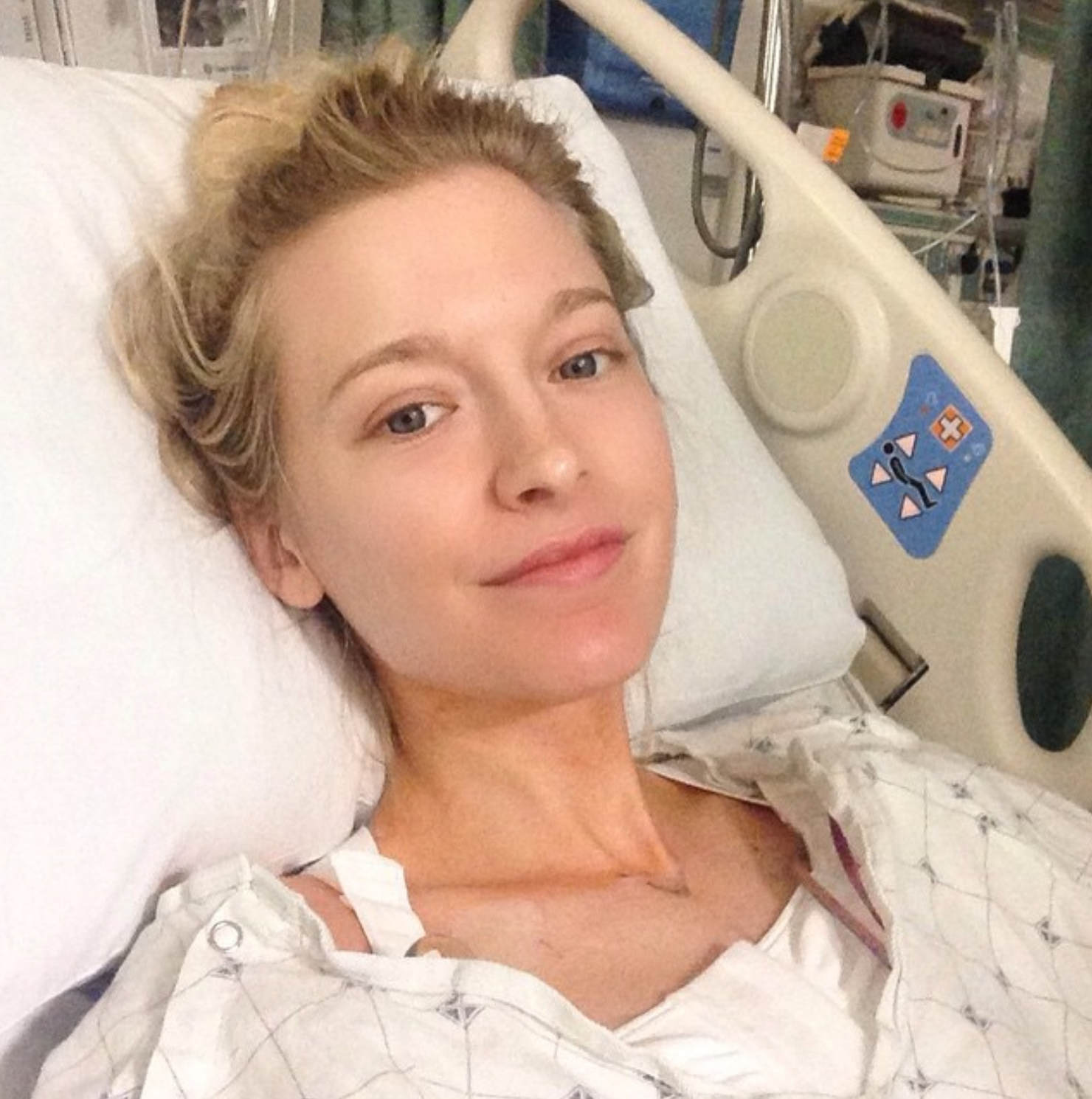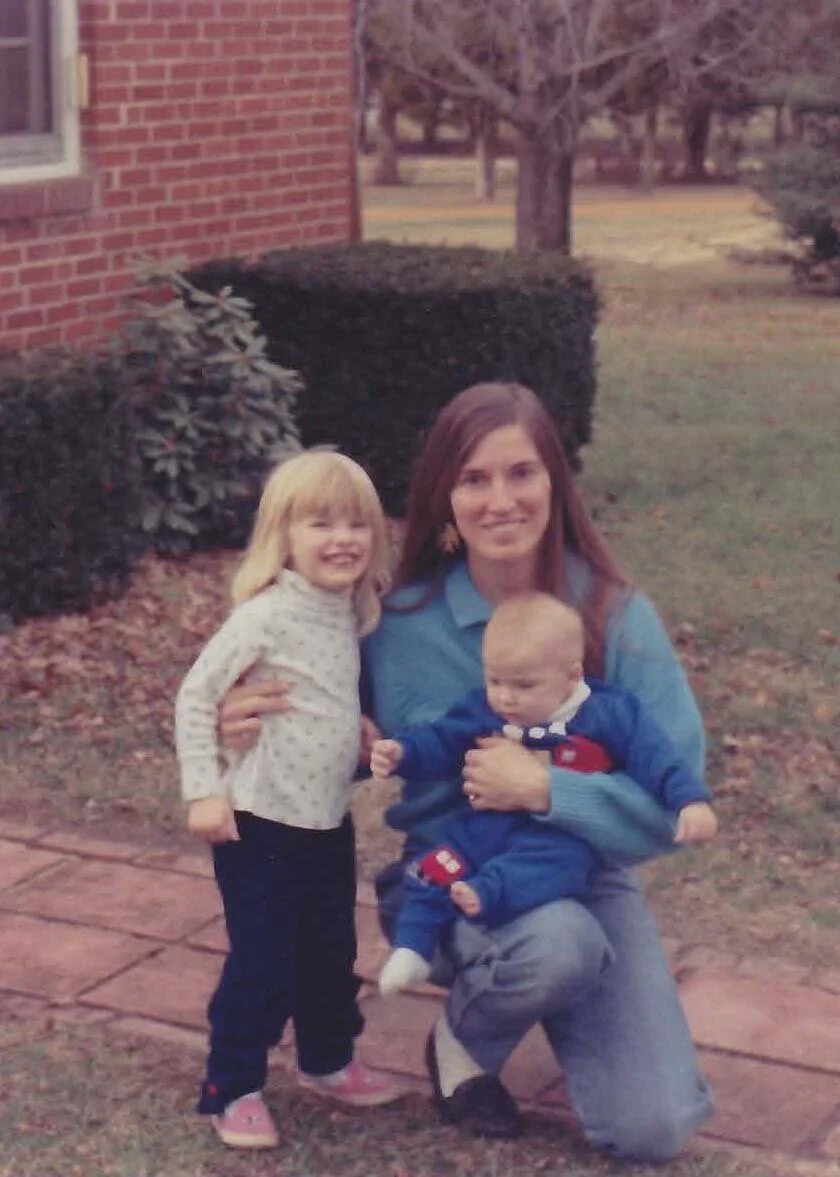How I Found the Courage to Quit Stable, Prestigious Careers to Become a Founder at the Age of 29
And my advice if you think you should, too.
“Starting a business is scary. It affects every part of your life. People think you’re crazy, and they’re kind of right.”
-Isharna Walsh, Founder and CEO of Coral
Are you thinking about starting your own business? Do you have a little voice in your head that whispers ideas and dreams about things you want to create? Are you unsure whether you should listen to that voice?
I had that voice, too, and for the longest time didn’t know what to do with it.
As a half South Asian woman, I was raised to get straight A’s, stay out of trouble, go to a prestigious school, and forge a stable career. I followed the rules, getting law and economics degrees, and spending my twenties working in government, management consulting, technology, and venture capital. Then, just before my thirtieth birthday, I quit my job without a safety net to start my company, Coral, which helps people improve their sexual well-being. (Can you imagine what my mother said?).
There’s lots of advice out there about whether or not to take a risk and run headfirst at a business idea, and the truth is that nobody can answer that for you. But looking back now, I can see two things clearly: The time I spent trying on different careers and identities taught me valuable lessons. It wasn’t wasted. Yet it’s also true that these highly demanding, great-on-paper work experiences were my way of stepping right up to the edge of what I really wanted to do before I found the conviction to close my eyes and jump.
Starting a business is scary. It affects every part of your life. People think you’re crazy, and they’re kind of right. It threatens your finances, your mental health, and your career trajectory. You’ll face judgment from your parents, your friends, prospective partners, investors, and strangers who read about you on the internet. And it’s more likely than not that your business will fail.
Stepping into that vulnerable space—and being comfortable there—is especially difficult if you haven’t been conditioned to embrace fear, and don’t have a model that looks like you. As a woman, I hadn’t been groomed in resilience since my first crush rejected me in the schoolyard, like my male classmates. I’d also rarely personally encountered women in positions of leadership, and had never had a female boss. Successful entrepreneurs, in my mind, were either men or celebrities—people who look and act nothing like me.
So what gave me the confidence to go for it? I had to create the space to acknowledge and examine that knowing inside of me, rather than drowning it out with distractions.
For me, this took meditation and introspection. I sat with my self-doubts and learned the subtle distinction between self-preserving fear and self-limiting fear. I let myself acknowledge the knowing that told me entrepreneurship was my path and identified the narratives that held me back as self-limiting and socially constructed, rather than real obstacles. (And in the meantime, I used my jobs as crash courses in high-growth startups, technology development, and the dynamics of venture-funded businesses until I found the business idea I couldn’t ignore).
So when the idea for Coral came, this time the voice in my head was so strong that not doing it felt harder than giving it my all.
If you’re considering whether entrepreneurship is the right path for you, spend time with yourself, in the quiet. Journal, meditate, go for walks, turn inward. Acknowledge the hurdles, personal and societal, and how they might be affecting you. Think through whether you have the self-belief, resilience, and determination to back yourself and push your idea forward through the obstacles—because it’s not easy, and you will want to give up.
When you stop and ask yourself what you want to create with your one short life, chances are that voice will shout.
And you’ll know what you have to do.
About the Author: Isharna Walsh is the founder and CEO of Coral, a sexual wellness app that offers evidence-based guides to better sex for all humans. Born in Sri Lanka and raised in Australia, Isharna worked for the Australian Prime Minister, Boston Consulting Group, and a Los Angeles VC firm before turning 30. After realizing that nothing that is so essential to our health and happiness is as neglected as sex and sexuality, she raised $3 million in seed funding to launch Coral in November of 2019. One year later, Coral is a sexual wellness pioneer that’s helped hundreds of thousands of people create their best sex lives.
MORE ON THE BLOG
How This Female Veteran Used Her Military Training to Build a Multi-Million Dollar Company
From an Air Force pilot to a health and wellness industry disruptor.
“As a combat-trained pilot, I am always thinking, ‘Miles ahead of the jet.’”
—Riley Rees, U.S. Air Force Officer and Founder of Sofia Health
I served in the Air Force both as an enlisted Aeromedical Evacuation Technician and an Officer turned C-17 pilot before launching Sofia Health, an online health and wellness platform.
The military isn’t the first place that most people think of for entrepreneurial training, but as it turns out, this experience provided an elite and unique education that has provided core fundamentals I still use every day. The military has a proven track record of teaching leadership, strategic planning, creative problem-solving, task execution, and resiliency—all traits that are essential to running a business or building a startup.
Below, I’m sharing three major takeaways that helped me and can be translated to help any entrepreneur as they startup.
Takeaway #1: Prepare
Gather data, make decisions, be strategic.
In a startup, you are building a solution to a problem and you are in search of a scalable business model. There is no checklist that can guarantee success. Even if you have been successful in the past, when you start a new company, you are in uncharted territory. This can truly be scary when you are spending your valuable time, energy, and money.
But in order to be as successful as possible, do your homework and be prepared. You need to understand the environment into which you are trying to build, do your market research, and understand your customers' problems intimately.
As a combat-trained pilot, I am always thinking, “Miles ahead of the jet.” You need to know where you are, what your capabilities are, and be able to handle any threats that may or may not happen. As an Aircraft Commander on the C-17, I was responsible for flying into combat zones. People’s lives were in my hands. We could spend days planning for one single moment.
In the early stages of a startup, you need to do the same planning. It’s necessary to gather as much information as possible on users, the problem you are solving, the market, investors, competitors, and potential partners. This information and preparation serves as your foundation and will help guide your strategy and execution.
As a flying target, I needed to be ready to handle any situation inside or outside my jet. The key in any of these situations is preparation. We know that no matter what situation we are in, we are prepared to handle it.
Takeaway #2: Collaborate
To achieve a specific objective, it takes a team of people willing to give their best effort in alignment with the mission.
Military leaders are effectively running companies. You might have five people below you as a new Lieutenant and thousands as you progress in your career. This exposure to leadership inherently teaches you how to take a group of individuals with a diverse range of backgrounds and turn them into an effective unit.
When you launch a startup, one of the first things you can do before you bring on any members is to establish your mission statement. This sets the direction for your company and helps create cohesion. Even in the beginning, this ensures every member of your team, from volunteers to employees, understands your company’s objectives, goals, and values.
This simple task creates unity and helps each team member understand how they can contribute for maximum impact. You’ll find that your mission statement significantly increases teamwork, progress, and can even help ensure you hire people who are aligned with your core values.
Overall, establishing your mission statement will produce huge dividends for your company.
Takeaway #3: Persevere
Entrepreneurship is not for the faint of heart.
Entrepreneurship requires unparalleled discipline, persistence despite challenges, and a special mental toughness that allows you to move from one failure to the next with positive, determined enthusiasm.
The military cultivates leaders who have the confidence to take risks. You are consistently pushed out of your comfort zone and develop a unique mental and physical toughness. Failure is not an option. Instead, you learn to figure it out. You become a disciplined, innate problem solver who is comfortable being “uncomfortable.”
When you launch a startup, you are going to face challenges. Every customer or user will not love your company and your alpha or beta product may not be the prettiest. The entire experience can be uncomfortable, but this is one of the most incredible learning experiences you can have.
To help overcome this, adopt a growth mindset, and keep going. Every single day you will be making astronomical progress, so don’t let any of the challenges get you down! The key to success is perseverance. As Wayne Gretzky has said, “You miss 100 percent of the shots you don’t take.”
About the Author: Riley Rees is a U.S. Air Force Officer. Soloing in an airplane before she was 18, she has flown a wide variety of civilian aircraft. She has flown the T-6, T-1, and the C-17 for the Air Force and most recently the B-757, B-767, B-777 for United Airlines. In 2019, with a mission of making holistic health and wellness care more accessible, Riley founded Sofia Health, an online platform making it easy to find, book, and connect to holistic health and wellness practitioners.
MORE ON THE BLOG
This Female Entrepreneur Built a $500K Company Helping Women Grow Their Businesses on Instagram
Here’s how she did it.
“No one can do it alone. The most important part of entrepreneurship is knowing when to ask for help.”
—Madison Tinder, Marketing and Visibility Coach
As I write this, I’m sitting on the porch of my home, which I bought on my own at 25 years old. If you had told me a couple of years ago that I would be able to buy a home in a new city and not only be financially independent but thriving, I wouldn’t have believed you.
Back then, I thought my path was clear, a bachelor's degree, a master’s degree, then working in the sports industry in my dream city, Dallas. Things didn’t go as planned. I graduated with my masters and, despite internships, classes, and a 9-5 job throughout my program, when I graduated, I didn’t get my dream job at my dream team. I was crushed.
But I pulled myself together and got a job. It wasn’t “the job” but it paid the bills. I decided to start doing social media management on the side as a way to bring in a little extra income. I never thought it would grow into anything more than a side hustle. I quickly went from one client to eight and realized that maybe I could really do this.
Fast forward to today, I transitioned from social media management to marketing coaching online for entrepreneurs. For the past two years, I’ve been growing my business and helping women all over the world grow theirs. My business has become so much more than I ever imagined. I could say it was luck or any other cliché thing people attribute to success, but that’s not the truth.
The truth is a six-figure business doesn’t happen overnight, and there is no formula that you can follow. However, there are a few lessons I’ve learned along the way that I believe helped me reach $500,000 in sales in only one year and launch my first product-based business, Soulful Scrunchies.
Tip #1: Own Your Confidence
No one wants to buy from someone who doesn’t believe in what they are selling. If you don’t believe in your product or service 100%, you should reevaluate. I fell into imposter syndrome when I first started out, it’s normal. But, once I took a step back and looked at the results of my clients, it reminded me that not only are my skills valuable but that I deserve to be in this space.
For me, a huge step was realizing that I didn’t need to be someone else. When I first started as a marketing coach, I didn’t fit the mold of the other coaches in the space. I was younger, didn’t show up on Instagram with perfect curls and cute blouses, I was much more comfortable in a scrunchie and top knot. Being confident in yourself and your business is an ongoing process but it is one of the most important pieces to success
Tip #2: Trust Your Gut
You know how doctors say that you know your body best? Well, the same goes for business. You know your business inside and out. You might get to a point where you aren’t involved in every single aspect of your business, but there are always going to be decisions that fall solely on you. It can be easy to wobble back and forth on big decisions, second guess yourself, and let others' opinions influence you. You have to trust your gut.
A potential client is giving you red flags? Worried that someone on your team isn’t a good fit? You are probably right. Sometimes the best decisions for our businesses are not ones that we stew over, make pros and cons lists for, and are super logical.
Tip #3: Know Your Audience
The key to growth is focusing on your target audience. You need to speak to your audience in a way that is aligned with where they are at. You need to know everything about your audience, beyond demographics. You are going to have to dig deeper to find their story, their struggles, what they are looking for, and their goals. If you don’t have that information, you might as well be speaking to a wall.
Tip #4: Serve First
So many people in the online space get caught up in the next sale that they forget your most important asset is a happy client or customer. They are a walking billboard for you. Showing up and giving them your all should be your number one priority always. Not the likes on your Instagram photo or the sales numbers on a launch but the questions people ask and going above and beyond for your people always.
Tip #5: Invest in Support
No one can do it alone. The most important part of entrepreneurship is knowing when to ask for help. The type of support will vary based on your business, but I suggest taking a look at where you are spending your time and reflect on what is draining you. This may mean deciding to hire help for social media, client management, accounting, design, etc. Or it could mean realizing that you need a mentor to get you to that next level. Having a community will help you prevent burnout, feel less isolated, and have people you can bounce ideas off of.
There is no one-size-fits-all model for building a six-figure business. If anyone tells you otherwise, run the other way. But, through my time as an entrepreneur I’ve learned how helpful and important the tips above can be. If you are feeling frustrated and like your business is not having the momentum that you hoped for, be patient, take action, and remember that no one’s entrepreneurial journey is the same.
About the Author: Madison Tinder is not like most 25-year-olds. Instead of stressing about finding “the job” or making rent, she is a homeowner and runs a six-figure business. She is a marketing and visibility coach based in Louisville, Kentucky, and helps her entrepreneur clients grow and market their brands through Instagram. She’s an Instagram story pro and launched her first product-based business this fall, Soulful Scrunchies.
MORE ON THE BLOG
“Social Media Has the Power to Positively Change Our Lives If We Let It"—Here's How to Be Authentic Online
Opening up about breast cancer helped this women’s health advocate reach a wider audience.
“Social media has the power to positively change our lives if we let it.”
—Allyn Rose, Women's Health Advocate & Founder of The Previvor Foundation
Keeping up with social media has always been a struggle for me. But it’s never been that I was “too busy” or that I didn’t understand the platforms. The issue was that I didn’t know how to be “authentic” online. I think that’s something that a lot of us can relate to.
How do you balance talking about intimate aspects of your life while still being professional? How do you show a “day in the life” while not fully letting on that you haven’t changed out of your pajamas? How do you talk about your relationship while being respectful and still reserving privacy with your partner? How can you share negative seasons of your life without being a total Debbie Downer? It’s also really easy to start making negative comparisons about your life and the lives of those that you follow. Do people really do their hair and put on makeup every single day? Is anyone’s house that clean all of the time? What type of relationship involves someone picking you up and spinning you around in a picture-perfect embrace on a toilet paper run?
The answer to all of those questions is: “Only the unrealistic ones.” So go ahead and breathe a sigh of relief. But social media matters. It matters because it’s a direct way of speaking to our generation… and that’s a powerful thing.
I started becoming more active on social media in 2015. While Instagram had begun to grow in popularity, it was nothing like it is now. Back then, it was primarily an overly-edited and perfectly-filtered glimpse into the lives of a beautiful few. Today, it has transformed into a 24/7 display of people’s real lives. People now feel comfortable sharing their trials, as well as their triumphs. We see makeup-free faces, stretch marks, postpartum bodies. We see real life.
“The more I shared about the trials in my life, the more my channels began to grow.”
—Allyn Rose, Women's Health Advocate & Founder of The Previvor Foundation
And I think that represents a generational shift. We’re tired of seeing (and trying to live up to) these perfect lives. It wasn’t until I noticed things start to change that I realized just how inauthentic my online presence had become. I constantly felt like I was playing “catch up” with the trends, the lifestyle, and the never-ending display of perfection. I knew that my life looked nothing like my feed and I made a conscious effort to change that.
I threw caution to the wind and started talking about what was really going on in my life: undergoing a preventive double mastectomy at 26. I started sharing the way that I felt about my body post-surgery, the impact that it had on my relationship, and how it would change a lot of aspects of my future. Prior to my mastectomy, I had been a Miss USA and Miss America contestant, I was a full-time model and all of that had been put on hold to proactively remove my breasts in an effort to prevent breast cancer. I did this because by the time I turned 16, I had already lost my mother, grandmother, and great aunt to the disease, and I was determined not to suffer the same fate.
I was shocked to see that the more I shared about the trials in my life, the more my channels began to grow. At first, I thought it was just the rubbernecking effect—people slowing down to look at the damage. But as the years went by, a true community began to grow. That community included women who had already battled breast cancer, those who carried a gene mutation that increased their chances of developing cancer, those who were about to undergo preventive surgery, and even those who just wanted to learn how to better support their friends or family members in the same situation. It was wonderful to be able to talk to others who had been in my shoes and those several years out who could offer me some long term perspective on what life might look like when the “dust fully settled.”
Photo: Courtesy of Allyn Rose
What social media also did was introduce me to the struggles that many women were facing in learning about their options for breast reconstruction after a mastectomy. It got me thinking, “Why is there not a comprehensive resource for women undergoing this surgery? Why are women being forced to message strangers on the internet about these life-changing surgeries?” I put my head down and I got to work.
That’s when The Previvor was born. In October 2019, I launched my nonprofit’s website, a digital women’s health platform that allowed women to be fully informed about all of their choices surrounding mastectomy. As The Previvor grew, so did an even larger community of women who were able to support one another through this very challenging time in their lives. I couldn’t believe that something like social media, something that had given me anxiety for years, was now a vital part of my everyday life. And instead of causing me anxiety and FOMO, it was now bringing me fulfillment and a community of my own.
As the years went by, and I began to face new challenges like trying to start a family. Because of my family’s health history and being the carrier of a known gene mutation, I opted to undergo the IVF process, followed by genetic testing with Shady Grove Fertility. Because I knew that so many women who had undergone mastectomy were also carriers of the breast cancer gene mutations BRCA1 and BRCA2, I decided to publicly share my fertility journey. I hoped that it might remove some of the “fear of the unknown” from other women who may have to go down the same road in the future. I was blown away by the love and support that I received from women around the world. After 10 months of treatment, two egg retrievals, and an embryo transfer, I’m now 18 weeks pregnant with my first child. I really don’t know how I would have navigated this incredibly emotional experience without the support I received via social media.
It’s hard to imagine navigating the last five years without the people I met on these platforms. It gets a bad rap at times, but social media has the power to positively change our lives if we let it. So I encourage you to stop trying to “keep up” and start sharing your most authentic self. You never know where it might lead you.
“I encourage you to stop trying to ‘keep up’ and start sharing your most authentic self. You never know where it might lead you.”
—Allyn Rose, Women's Health Advocate & Founder of The Previvor Foundation
About the Author: As a 24-year-old Miss America contestant, Allyn Rose made headlines across the globe with the controversial decision to undergo a preventative double mastectomy after losing her mother, grandmother, and great aunt to breast cancer. Allyn's story inspired celebrities like Angelina Jolie and a new generation of women to take charge of their healthcare choices. Determined to encourage other women to know that their scars are beautiful, Allyn boldly became the first woman with a mastectomy to model for Sports Illustrated Swimsuit. She is the founder of The Previvor, a 501(c)(3) non-profit women's health platform, which serves as a resource for women undergoing mastectomy and the creator of the #SelfExamGram, a social media movement encouraging women to perform a monthly self-breast exam.
MORE ON THE BLOG
I Launched a Non-Profit Women's Health Website With $0 and No Experience in Web Design
It’s the “Wikipedia of Mastectomy.”
“The goal was to put women back in the driver’s seat of their healthcare choices and allow them to advocate for themselves (sometimes even with their own doctors).”
—Allyn Rose, Women's Health Advocate & Founder of The Previvor Foundation
This October marks 10 years that I’ve been part of what’s known as the “Breast Cancer Community.” I once heard it referred to as “the worst club with the best members.” I don’t think I could put it better.
In 2010, I was a college senior at the University of Maryland, College Park. Like most students, I was trying to soak up the final few semesters with friends, mastering procrastination, and asking myself the age-old soon-to-be-grad question: “What’s next?” While avoiding finishing one of my final papers, I received an e-mail on my sorority’s listserv entitled “Breast Cancer Charity Pageant.” I opened it—anything to avoid another 5 pages on legal theory. The e-mail was inviting students who had a connection to breast cancer to enter a new beauty pageant, benefiting a breast cancer non-profit. I was intrigued. Something inside of me said, “Just give it a try.”
“
I was far from what you’d consider the beauty queen type. I wore high-top sneakers, leather jackets with studs and was a former member of a punk rock band.”
—Allyn Rose, Women's Health Advocate & Founder of The Previvor Foundation
My mother had lost her second battle with breast cancer just a few years prior and I knew that she would have given anything to see me in a beautiful gown, participating in something like a pageant. But you have to understand, I was far from what you’d consider the “beauty queen” type. I wore high-top sneakers, leather jackets with studs and was a former member of a “punk rock” band. Not exactly Miss USA. But throwing caution to the wind, I filled out the form, submitted my best MySpace profile picture, and pressed send. What happened next changed the trajectory of my life forever. I ended up not only becoming a contestant but winning that pageant (which, looking back, was nothing short of a miracle). Fast-forward three years, and I would have the opportunity to compete in Miss USA and Miss America. For a punk rocker at heart, it still doesn’t feel real.
As a Miss America contestant, I chose to advocate for preventive healthcare as part of my charitable platform. As the daughter, granddaughter, and niece of women who lost their lives to breast cancer, I knew just how important it was that I be proactive in my breast health. At that point, I had already made the decision to preventatively remove my breasts in an effort to avoid breast cancer and hopefully prolong my life. This came after a hard conversation with my father where he had looked me straight in the eye and proclaimed “If you don’t take this seriously, you’re going to end up DEAD DEAD DEAD… just like your mother.” I was only 18 at the time, but the “kid gloves” had come off. My father knew that he needed to be that brusque with me if I was going to take it seriously. It gave me the long term perspective that I needed.
“
While I didn’t end up walking away with the Miss America crown, I was given something that, looking back, was even better—a platform to speak to my generation.”
—Allyn Rose, Women's Health Advocate & Founder of The Previvor Foundation
A few months before the Miss America pageant, I received a call from a journalist asking about my decision to undergo surgery. I happily shared my story and looked forward to having a nice newspaper clipping that I could put in my scrapbook. I wasn’t prepared for what came next. I woke up the next morning with 17 missed calls, voicemails, a barrage of unread e-mails. I was now the top trending story on every major U.S. and international media outlet with the headline: “Miss America contestant, 24, to undergo preventative double mastectomy” and my quote “I’m choosing life over beauty.” The story seemed to take the world by storm. This was prior to Angelina Jolie’s revelation and women in the “beauty industry” simply weren’t talking about things like this. Hell, most people didn’t even know that a surgery like this even existed.
Before I knew it, I was speaking at events across the country, I appeared on all the morning talk shows, I was asked to give a TEDx talk and my world didn’t stop spinning for months. While I didn’t end up walking away with the Miss America crown, I was given something that, looking back, was even better—a platform to speak to my generation. I knew that this was not an opportunity afforded to many people, so I put my plans to attend law school on hold and began working as a passionate advocate for preventive healthcare and educating women on their healthcare choices. As the years went by, I felt driven to do something more than simply share my personal experience—I wanted to provide others with a resource to help them in their journey.
Photo: Courtesy of Allyn Rose
At age 26, I underwent a bilateral double mastectomy, becoming a Previvor— removing both of my breasts in an attempt to “previve” breast cancer. Being so public with my surgery and having had a positive cosmetic outcome, I soon started being inundated with messages from women all over the world asking about my surgery: “Are your implants over or under the muscle?” “Did you keep your nipples?” “Do you have fat grafting?” “Do you have any sensation remaining in your breasts?” I quickly realized just how difficult it was to be fully informed on topics like genetic testing (to identify if one carries a breast cancer gene mutation), types of mastectomy, and the accompanying options for reconstruction. Even having earned an honorary Ph.D. in Google, partnered with some of the best doctors in the world, and really having done my due diligence in preparing for surgery, even I didn’t have all of the answers. This didn’t sit well with me. And one day, I said to myself, “I need to stop waiting around for things to be different. Why not just build it myself?” So, with a budget of $0.00, no experience in web design, I set off to create what would become The Previvor Foundation, a 501(c)(3) non-profit digital women’s health platform nicknamed the “Wikipedia of Mastectomy.”
In October 2019, The Previvor went live, becoming a one-stop-shop for women wanting to learn about ALL of their breast health options. The goal was to put women back in the driver’s seat of their healthcare choices and allow them to advocate for themselves (sometimes even with their own doctors). Breast reconstruction had become an “assembly line,” with physicians offering patients one option for breast reconstruction and “out the door you go!” I wanted women to know that there are numerous options for surgery and what’s best for one woman’s body might not be what’s best for yours. And the more informed you are prior to surgery, the more likely you are to be satisfied with the outcome. My best advice: If your doctor says no to the surgery and you think is best for your body, it’s probably time to get a new doctor.
The Previvor continues to grow, providing additional resources, and creating a community of empowered and informed women. To learn more or to donate, please visit www.ThePrevivor.org.
“
If your doctor says no to the surgery and you think is best for your body, it’s probably time to get a new doctor.”
—Allyn Rose, Women's Health Advocate & Founder of The Previvor Foundation
About the Author: As a 24-year-old Miss America contestant, Allyn Rose made headlines across the globe with the controversial decision to undergo a preventative double mastectomy after losing her mother, grandmother, and great aunt to breast cancer. Allyn's story inspired celebrities like Angelina Jolie and a new generation of women to take charge of their healthcare choices. Determined to encourage other women to know that their scars are beautiful, Allyn boldly became the first woman with a mastectomy to model for Sports Illustrated Swimsuit. She is the founder of The Previvor, a 501(c)(3) non-profit women's health platform, which serves as a resource for women undergoing mastectomy and the creator of the #SelfExamGram, a social media movement encouraging women to perform a monthly self-breast exam.
MORE ON THE BLOG
I Had a Double Mastectomy at the Age of 26—Here's Why You Need to Know
ICYMI, it’s Breast Cancer Awareness Month.
“B
reast cancer screening, at any age, is vital to the health and well-being of women. However, it’s one of the latest victims of the COVID-19 pandemic.
”
—Allyn Rose, Women's Health Advocate & Founder of The Previvor Foundation
The novel coronavirus has impacted our world in ways many of us could never have imagined. But women undergoing treatment for breast cancer, including those trying to prevent it, have faced a unique set of challenges.
Having a mastectomy can be life-altering. As someone who underwent a preventive double mastectomy at the age of 26, I know firsthand the physical and emotional repercussions of this type of procedure. I chose to preventatively remove my breasts because, by the time I turned 16, I had already lost my mother, grandmother, and great aunt to breast cancer, with my mother discovering her own breast cancer at 27. Her diagnosis was the result of an early mammogram, which she only received after months of persuading her doctor and being repeatedly told that she was “too young to have breast cancer.” Her first mammogram identified an invasive tumor measured at the size of a golf ball. By the time it was removed, only a few months later, the tumor had grown to the size of a grapefruit.
The sad reality is that my mother’s story is not unique. Young women are often denied screening. And by the time cancer is discovered, it’s too late. This is why breast cancer screening, at any age, is vital to the health and well-being of women. However, it’s one of the latest victims of the COVID-19 pandemic.
Access to life-saving screenings like mammograms, MRIs, and breast ultrasounds has been deemed “non-essential” in a COVID-19 world. These screenings afford women the opportunity to catch breast cancer early (when it’s most curable) or give them the information they need to save their own lives through preventative surgery. By postponing annual screenings, the healthcare industry is primed to receive an onslaught of late-stage breast cancer diagnoses, increasing the ever-expanding burden women face during this pandemic.
“B
y the time I turned 16, I had already lost my mother, grandmother, and great aunt to breast cancer, with my mother discovering her own breast cancer at 27.”
—Allyn Rose, Women's Health Advocate & Founder of The Previvor Foundation
Now let’s imagine for a moment receiving a breast cancer diagnosis in 2020.
If you’re thinking: “Surely cancer patients must have access to care during the pandemic”—well, you’d only be half right. Women who have been diagnosed with breast cancer and have undergone a mastectomy are also being denied access to breast reconstruction surgeries—now classified as “elective procedures.” However, affording women the ability to reconstruct their breasts is not elective, it is simply the completion of their medical treatment. And while breast reconstruction may look different for every woman, it is often vital to the health and well-being of those faced with a mastectomy. By denying access to this important part of medical care, we are likely welcoming a myriad of other health issues as a result. While we all take the necessary precautions to eliminate the spread of coronavirus, the healthcare industry should take particular caution in avoiding myopic restrictions impacting the health and well-being of women.
As such, I would encourage all women to take time to learn what they can do to be proactive in their breast health. Small things, such as learning how to correctly perform a self-breast exam can be vital in early detection. Implementing this five-minute ritual once a month could save your life! Interested in learning how? A step by step tutorial (and other helpful tips) can be found on Instagram, YouTube, in blog form or you can tune into Create and Cultivate’s “Self-Care Sunday” on IG Live on October 11th at 10 AM PDT for a live demonstration. See you then!
“
I would encourage all women to take time to learn what they can do to be proactive in their breast health.”
—Allyn Rose, Women's Health Advocate & Founder of The Previvor Foundation
About the Author: As a 24-year-old Miss America contestant, Allyn Rose made headlines across the globe with the controversial decision to undergo a preventative double mastectomy after losing her mother, grandmother, and great aunt to breast cancer. Allyn's story inspired celebrities like Angelina Jolie and a new generation of women to take charge of their healthcare choices. Determined to encourage other women to know that their scars are beautiful, Allyn boldly became the first woman with a mastectomy to model for Sports Illustrated Swimsuit. She is the founder of The Previvor, a 501(c)(3) non-profit women's health platform, which serves as a resource for women undergoing mastectomy and the creator of the #SelfExamGram, a social media movement encouraging women to perform a monthly self-breast exam.
MORE ON THE BLOG
What Does It Mean to Be a Minority, Women-Owned Business in the Online Space?
“Your voice and experience matter.”
“A
ll women and girls should have the opportunities to achieve success, whatever it may mean to them, on their own terms.”
—Annie Chang, Brand Strategist and Co-Founder of Olea & Fig
Over the past few years, there has been tremendous growth for women-owned businesses and organizations that empower women. Given that Olea & Fig is a women-owned business that supports other women entrepreneurs, we have experienced notable growth and a surge in demand.
As we move forward in our entrepreneurial journey as minority women, we’ve also experienced the impact and power of coming together with the different communities we are part of—women, women entrepreneurs, Asian women, and Asian American women.
Your voice and experience matters.
With the growth of women-centered communities and conversations that support minority-owned businesses, we have had the opportunity to be part of many of them. As a minority who has experienced both eastern and western culture, education systems, and work environments, I understand the different expectations and perspectives of those who share similar backgrounds as us face. My co-founder and sister, Terrie, and I quickly learned that our voices matter in ways we didn’t expect.
Everyone’s voice does.
It is our responsibility to share our voice, knowledge, and story with other people who are going through similar experiences and who are members of our communities.
Through workshops, events, and conferences, we have shared our perspectives and insights on wrestling with societal expectations as immigrants, women, Asian American women specifically, and how we can challenge and break free of barriers and navigate those waters through the possibilities we create. These meaningful conversations, exchange of ideas, and connections allow us to support and grow with others in our circles.
Join others who also believe empowerment drives growth.
We believe that all women and girls should have the opportunities to achieve success, whatever it may mean to them, on their own terms and this is our Brand Vision since the beginning of Olea & Fig. To help promote equity for minority women, besides all the business resources we provide to women businesses, we have been proactively partnering with nonprofit organizations and businesses that advocate for women and girls, and some specifically for Asian women.
It does not matter which market you are in, define your values and beliefs, and build them into your brand. Then find others who also believe that empowerment drives growth and whose values align with yours, and collaborate creatively to make positive changes together. Multiply your impact through synergy.
Photo: Courtesy of Olea & Fig
Your identity is your superpower.
In our experience and the experience of many women we work with, being a minority often leads to self-doubt and issues with self-esteem. These are battles we’ve struggled with in both the corporate and the entrepreneurial worlds. It is common that we, the minority, choose not to speak our minds and not to draw much attention, but to fit into “the norm” or majority instead. I experienced all of it from my personal experience in school, the corporate world, and during the early stage of my entrepreneurial path. I was working hard to become the majority - the white kids at school, the male colleges who are also working to get that promotion, the high-energy, and glamorous brands that are popular online…
But that’s not who I am.
The community we grew through Olea & Fig gave me an entirely different perspective. I learned that my identity as a minority is actually my strength. I saw that there is a huge community of women around the world who appreciate and share our backgrounds, ideas, and beliefs. I met women who also strive to create mindful businesses, to live intentionally, and to build a life filled with passion, impact, and meaningful conversations.
To unleash your true potential and possibilities, draw from all of your identities, experiences, and story. Turn all of it into your superpower. Turn them into your strengths and the uniqueness of your business, and build your identity and story across your messaging, mission, values, design, content, and beyond!
About the Author: Annie Chang and her sister Terrie “had it all.” Fancy degrees, big corporate titles from the outside they were living the dream, but they were unfulfilled, burnt out, and tired of hustling for someone else’s bottom line. They left their corporate careers to start a business of their own, Olea & Fig. They leveraged their backgrounds in design and marketing and created a company that enables women entrepreneurs to build successful, growth-focused, and mission-driven brands.
MORE ON THE BLOG
Opinion: Why You Should Make a PPT (People, Places, Things) List to Own This Chapter of Your Life Right Now
One founder explains just how powerful this practice can be.
Photo: Courtesy of Ariel Upton
When I was in my early twenties, my life guru and now business partner, Betsy Tomlinson, a woman forty years older than I, introduced me to a ritual she had created earlier in her career.
For each season and chapter, she kept detailed lists of the most important people, places, and things in her life. In her beautiful scrawl, she filled pages of hand-selected Italian leather journals (her favorite) with notes like:
3 pm at The King Cole Bar
Chatting with Ricky at Blue Agave over a margarita—extra ice
Long late lunch with C at Bistrot Margot
Watching the sun dance through the apartment in the afternoon
The first day of planting season
White taper candlesticks
There was no intent for what the list accomplished other than it helped her acknowledge and appreciate the things she held dear. With each list, she cemented the people who meant the most to her, the places that brought her the most comfort, and the things that elevated her life.
I adopted this practice immediately. Today, we formally call it a people, places, things (PPT) list. I was 22, newly graduated, a fresh young professional living in downtown Chicago. My list looked something like this:
M&M—new coworkers who make 9:00-5:30 too much fun
Summertime picnics in the park
My bright coral H&M dress
Fuji (my pet name for my first city bike) and taking rides by the lakefront
The Curse (a Wrigleyville dive bar that was our very own version of Cheers)
A decade later, I can vividly see these people, places, and things, and the impact they had on my daily life. I can reflect and see with absolute clarity that these were the things that made my life feel right and feel like mine at the time.
While it’s been nearly ten years since Betsy introduced me to this practice and my lists have changed often, direct reflections of the distinct chapters of life following the thread of new jobs, new friends, new cities, and new focuses.
Focus.
This is what this practice has brought to my life. As we grow we are essentially in a phase of constant expansion if we allow ourselves to be. There is always room for more—more growth, more experience, more interests. And while more can be appealing, it can also be terribly distracting. More pushes us to go wide, instead of going deep.
It’s important to recognize that there are seasons for more just as there are seasons for less.
Enter COVID-19. This pandemic, while completely without a playbook or any certainty on what the other side of this will look like, is a transition at its core. Similar, not the same, to transitions we’ve all navigated before: new job, new city, new spouse, new child, new chapter, new season.
This transition is begging for a PPT list all it’s own.
I’ve lost track of what day of quarantine I’m on, the days of the week continue to lose their pre-corona meaning, and the lines of time continue to blur. As a result, I’ve found myself more and more distracted by the bombardment of constant communication with dozens of people I haven’t spoken to in years in addition to my closest people and colleagues. There’s no shortage of suggestions for new things to do or try at this time to fill the hours. My relationship with place has been forced to change. The newness and the change of it all can be overwhelming.
So I sat down and started the age-old practice of creating my PPT list for this chapter of life. Once again, this exercise helped me deduce what is essential vs. what is a distraction in this new season we’ve been forced into.
Today, my list looks something like this:
The blue couch in my living room
My garden
Himalayan Salt Lamp
Grunty (my car) 2006 Volvo station wagon
Puzzles (I can’t believe I love puzzles)
Aunt Bonnie’s recipe for soda bread
My Morning Rightness Writing Group
A very short list of people who bring me comfort
Tracy Anderson workouts
The bathtub
In response to the pandemic, we, like so many others, pivoted our business strategy. What once was a focus on printed copies of a journal only available in the United States and in-person events, gave way to a digital edition that could reach anyone anywhere, and online events. I was so skeptical about the latter.
On March 15th, just as the world turned upside down, I put a casual message out on Instagram, “If anyone wants to meet for 30 minutes to reflect on a daily journal prompt and share our answers, send me your email.” Today, 50+ women from around the world participate in “morning rightness” on a bi-weekly basis from six countries and 10 states.
Last week, I invited them to write and reflect on their own PPT list. I had no idea that this prompt would spur so much emotion in the group and myself. I found myself crying when it was my turn to share, so moved by their reflections on how they viewed their lives today. I was amazed by their resilience and commitment to celebrating the people, places, and things they love most as they are right now.
As you navigate the pandemic and the inevitable transition that follows, how can you focus your energy on the people, places, and things that delight you instead of those that drain you?
How can you unapologetically prioritize your essentials and let the rest fall away?
If you want more, sometimes you have to reach for less.
Writing Activity: Make a list of the 10 people, 10 places, and 10 things that mean the most to you right now. Continue to refine your PPT list as you move through different chapters or seasons of life.
About the Author: Ariel Upton is on a quest to do it right every day of her life and help others do the same. She is the co-founder of The TODAY I DID IT RIGHT™ Approach and Self-Connection Journal. She is an intentional activator in all of her work as an author, writer, speaker, and mentor. To individuals, corporations, and communities, she is a careful coach that champions self-connection through writing into existence. Ariel believes living a right life on a daily basis is the secret to living a right life. She is an American ex-pat (former Chicagoan, forever Floridian) living in Sweden, where you can currently find her gardening, writing, and exploring the countryside @todayididitright.
TODAY I DID IT RIGHT is generously offering Create & Cultivators a15% discount on The TODAY I DID IT RIGHT Digital Edition. Simply enter code "CC15" at checkout.
Opinion: How to Stay Focused on What Matters During Times of Great Upheaval
“Regardless of the tasks sitting on each of our to-do lists right now, we’re all grappling with unprecedented uncertainties.”
Photo: Stephanie Stanley
With shelter-in-place orders in effect across the globe because of the novel coronavirus, many have suddenly, and unexpectedly, found themselves without access to the physical spaces (offices; fitness studios; places of worship) and basic structures (daily commutes; relationships; jobs) that previously shaped their day-to-day lives. I know firsthand how unsettling this can be, even without the added anxiety of contracting or spreading a deadly virus that has already infected more than a million people around the world.
In November 2017, I was working at a prestigious corporate law firm when The New Yorker revealed that my employer had retained Israeli intelligence operatives to spy on the women coming forward with their stories about Hollywood mogul Harvey Weinstein. The news was particularly disturbing to me as someone who, just a few weeks earlier, had made the difficult decision to come forward publicly to The Washington Post about my own experience with sexual harassment as an 18-year-old intern.
About two months later, I left to launch the Purple Campaign, a non-profit organization to address workplace harassment in the wake of #MeToo. In a matter of days, I went from having a job in which I was assigned a steady stream of specific tasks—and required to track my time in six-minute increments for billing purposes—to being my own boss in an uncharted foray into social entrepreneurship. I suddenly discovered that the organizational systems I’d relied on for years no longer met my needs, and struggled to prioritize and balance the day-to-day demands of my new career path.
“I was having a hard time focusing on work because I was terrified of the uncertain future ahead of me, both personally and professionally.”
Staying grounded in my work became even more challenging that fall, when I separated from my husband and partner of 11 years and moved out of the house we shared. In the span of a year, I lost the two fundamental structures of my life (my job and my marriage) along with the physical spaces (my downtown office and my home) that contained them. As much as I loved the creative and intellectual challenge of building a new organization, I found it increasingly difficult to translate those abstract goals into day-to-day tasks.
The dramatic societal change currently underway has prompted a flurry of think pieces about how to create a work-from-home schedule and the importance of establishing a morning routine to boost productivity. Don’t get me wrong: this kind of advice is important and useful. Over the past two years, I’ve learned—through a lot of trial and error—how to balance my competing needs for flexibility and discipline. This has included establishing not only a morning routine (which consists of a daily prayer, meditation, and self-led Ashtanga yoga practice) but an evening one, too (which I’ll admit is largely dominated by my elaborate skincare regimen), along with other rituals that keep me grounded.
But while my routines help me start each day with focus and clarity, they haven’t always made it easier to get substantive work done—and that’s especially true when the future I’m working toward feels as uncertain as the present moment I’m living in. I often finished my morning routine only to find it impossible to sit down and focus on the work tasks in front of me. I’d procrastinate by doing other “productive” things instead (going for a run; meal prepping; organizing a friend’s bachelorette party), putting my work off until a deadline loomed, or an email landed in my inbox that demanded a response.
As my one of my work-life gurus Adam Grant wrote in a recent COVID-era column, there’s an explanation for this: people tend to procrastinate “when a task stirs up feelings like anxiety, confusion, or boredom” or when “you’re working alone on tasks that seem ambiguous and meaningless.” As passionate as I am about the work I do at The Purple Campaign, entrepreneurship came hand-in-hand with an underlying anxiety that I didn't fully appreciate when I dove headfirst into it two years ago, and which only increased in the wake of my divorce. I wasn’t having a hard time focusing on work because I lacked good routines—I was having a hard time focusing on work because I was terrified of the uncertain future ahead of me, both personally and professionally.
“Regardless of the tasks sitting on each of our to-do lists right now, we’re all grappling with unprecedented uncertainties.”
Over time, I’ve found a way to get unstuck in such moments: by reframing the task to focus on the people instead of the project. If my to-do list looms large with things that are intimidating or feel “ambiguous and meaningless,” I spend a few minutes focusing on the why behind them: the people affected by the anxiety-inducing or seemingly mundane assignment in front of me. As Grant explains, “we’re more likely to stay on task when we know other people are counting on us,” and re-framing to orient a project around them “can bring focus and meaning” to the work.
A few weeks ago, for example, when I found myself putting off signing the contract for our latest #MeToo Meet Up, I paused for a moment to think about the people behind the administrative task: the individuals who find community and healing at our Meet Up events; the survivors I’ve partnered with to develop the series; the employees at the Outrage who depend on fees from events like ours to operate their small business. The same approach works when I’m faced with a task that feels daunting rather than boring, like putting together the agenda for my first-ever Advisory Board meeting last December.
This global pandemic is affecting us all in both different and similar ways; simultaneously transcending and exacerbating the deep pre-existing socio-economic divides in our society. Regardless of the tasks sitting on each of our to-do lists right now, we’re all grappling with unprecedented uncertainties: the health and safety of our loved ones; knowing when we’ll next see cherished friends and family; finding financial security in an economic crisis. Focusing on the people at the heart of it all isn’t a cure-all solution, but it is a way to reconnect—and hopefully keep moving forward with—what matters most to each of us during this time of great upheaval.
About the Author: Ally Coll is the president and co-founder of The Purple Campaign.
MORE ON THE BLOG
Opinion: When Life Gives You a Pandemic, Scrap Everything
The founder of a DTC beauty brand on how she's adapted her business during COVID-19.
Photo: Courtesy of Curie
COVID-19 has had a never-before-seen level of impact on our lives. This pandemic is, literally, reshaping the world as we know it. As a CEO and small business owner, this has had a huge impact. Not only has my personal life changed overnight, but professionally, a year’s worth of carefully laid plans around product launches, brand strategy, and partnerships were completely turned upside down seemingly overnight. COVID-19 walked into our conference room and erased the whiteboard.
My company, Curie, is a direct-to-consumer brand that sells clean, performance-based body care products. Fitness studio partnerships were a huge part of our 2020 strategy. We were scheduled to announce a partnership with a major national fitness chain the week of April 1 and had another large partnership in the works. With gyms, fitness studios and retail stores all off the table, for the time being, we immediately shifted gears.
“Out went our entire social media and content calendar. In came an even deeper obsession with our customers and what they wanted.”
When life gives you lemons, you make lemonade, right? There’s no recipe for this situation. Scrap it, start over. Out went our entire social media and content calendar. In came an even deeper obsession with our customers and what they wanted.
Now is a good time to engage with your community in a way that isn’t strictly focused on selling products. People are home, relying on screens for work, connection, distraction and more willing than ever to share their thoughts. What our customers told us is that they wanted interactive digital content. Instagram Live workouts, how-to-tutorials, tips, and funny content simply meant to make them smile. I made a conscious business decision to focus on building relationships rather than growing sales.
If you rely on physical spaces, like we do with our retailers and fitness studios, this temporary shelter-in-place has had an even greater impact on your business. A solution is to move toward virtual partnerships and campaigns with other brands. These are a fantastic way to leverage other audiences with which you wouldn’t typically connect. This led us to Better Together, a community campaign we launched with 35 other female-founded brands that included a universal discount code, a charitable donation, and a massive giveaway. It was organized virtually overnight by Nichole Powell, CEO of Kinfield. Partnering with other like-minded companies is a great way to provide a benefit to existing customers while also tapping into new audiences. For Curie, the Better Together campaign contributed to over 50% of our revenue during the week it was live.
Right now, there are plenty of things that are going wrong in our businesses, but identify what is working, and invest your team’s time and focus on that. For us, our DTC website stayed relatively flat during the first week of shelter-in-place in California and other states, but our Amazon.com business was booming. We leaned into this shift, putting all of our SKUs (stock-keeping units) on Amazon.com. When Amazon lengthened their shipping times for what they deemed “non-essential products,” like deodorant, we pivoted our strategy. We made shipping free for all orders on our online store and started fulfilling Amazon orders out of our own warehouse to decrease transit times. Since we had previously used the low-cost FBA (fulfilled by Amazon) service for these orders, this meant a 30% increase to our shipping cost, which we decided was the right thing to do to keep our customers happy (and fresh!) during this time. Give yourself permission to throw out “the plan.”
“Things have changed, our world has changed, and the faster you can adapt to these changes, the better you will be able to serve your customers.”
Think about what your company has to offer. Does it still meet your customer’s needs? As COVID-19 spread in the United States, hand sanitizer, overnight, became an essential part of people’s daily routine. Coincidentally, we had just wrapped up the development of a new product: a moisturizing, natural hand sanitizer. We originally planned to sell this product to our fitness studio partners versus direct-to-consumer, but clearly, needs had changed. At the beginning of March, we got on the phone with our suppliers and were able to move the launch date for the hand sanitizer up six months. We will be launching this product in a few weeks and will be gifting 10% of our initial inventory to those on the frontline: delivery men and women, grocery store workers, doctors, and nurses. Things have changed, our world has changed, and the faster you can adapt to these changes, the better you will be able to serve your customers.
Lastly, never underestimate the impact of giving back in small ways. As Paul Graham once said, “Do things that don’t scale.” During this time, that especially rings true. I personally wrote 100 hand-written postcards to our most loyal customers. There were no marketing ploys and no offers involved. Simply short and sweet notes to show my gratitude and wish them well. My team also sent care packages to people who are stepping up in the community, such as fitness instructors that are leading virtual workouts online. Everyone could use a little extra love right now.
The economic uncertainty we are all experiencing right now is out of our control, but what you can control is your response. Keep your focus on doing right by your customers and don’t be afraid to throw out the plan.
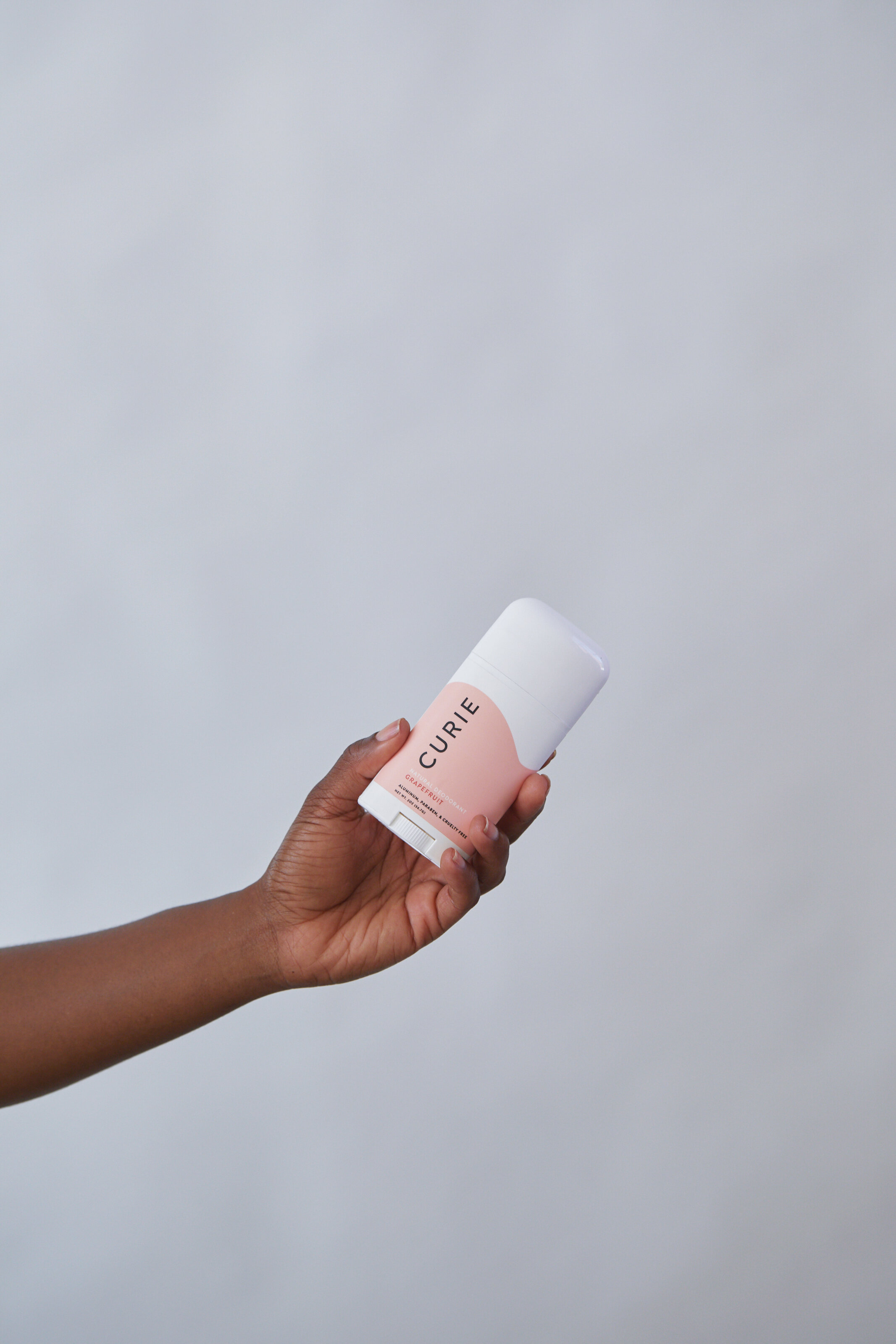
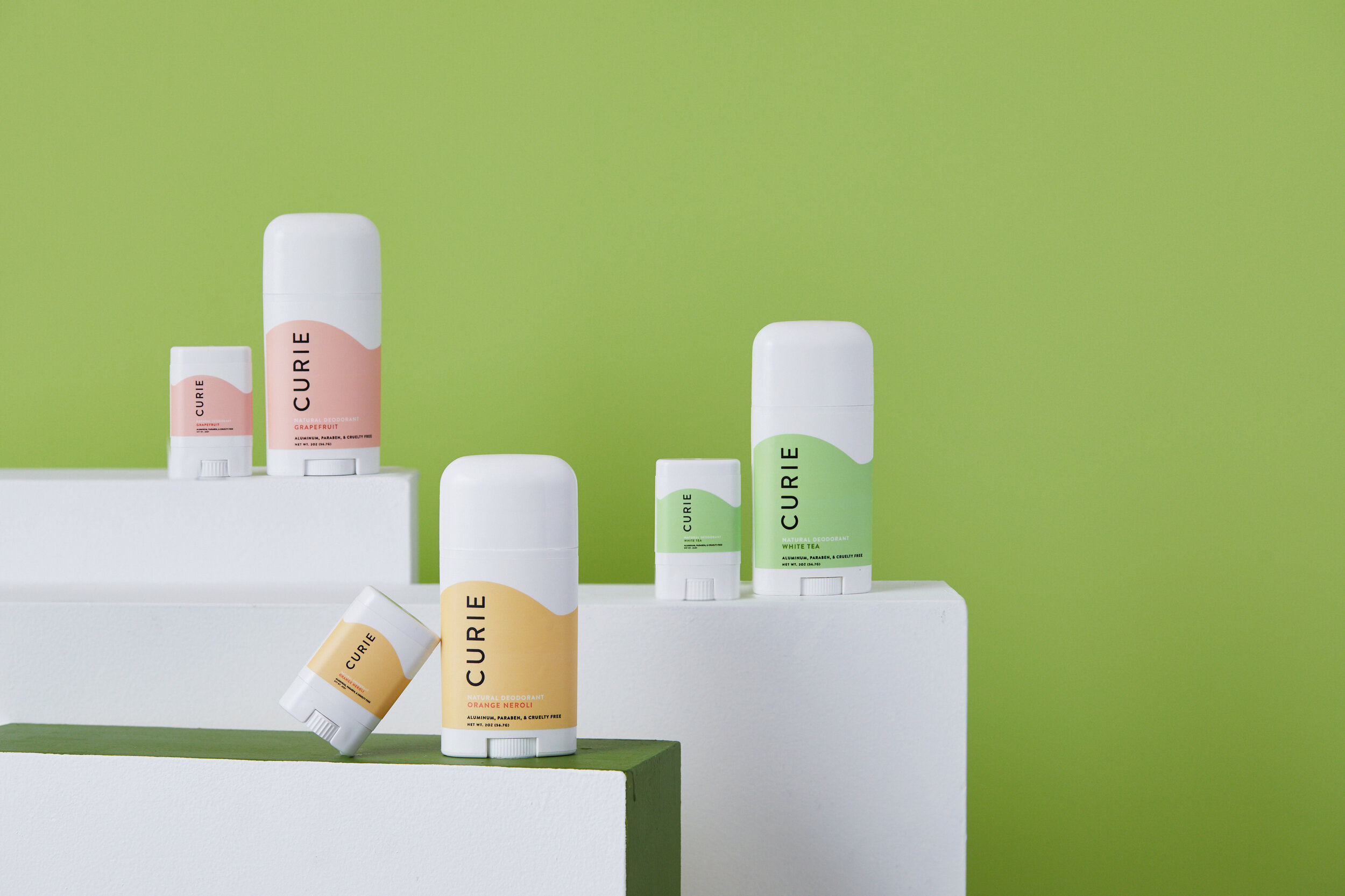
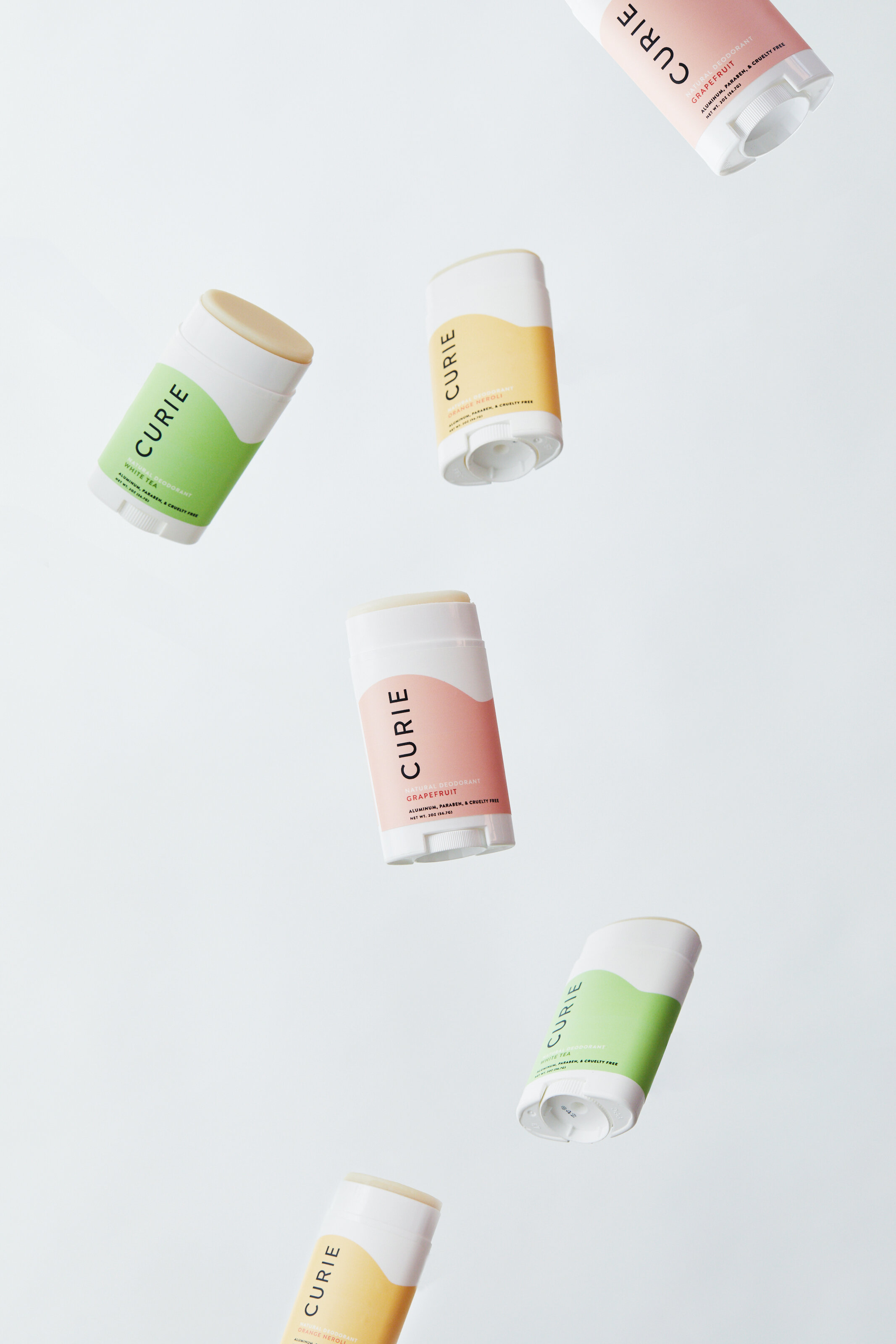
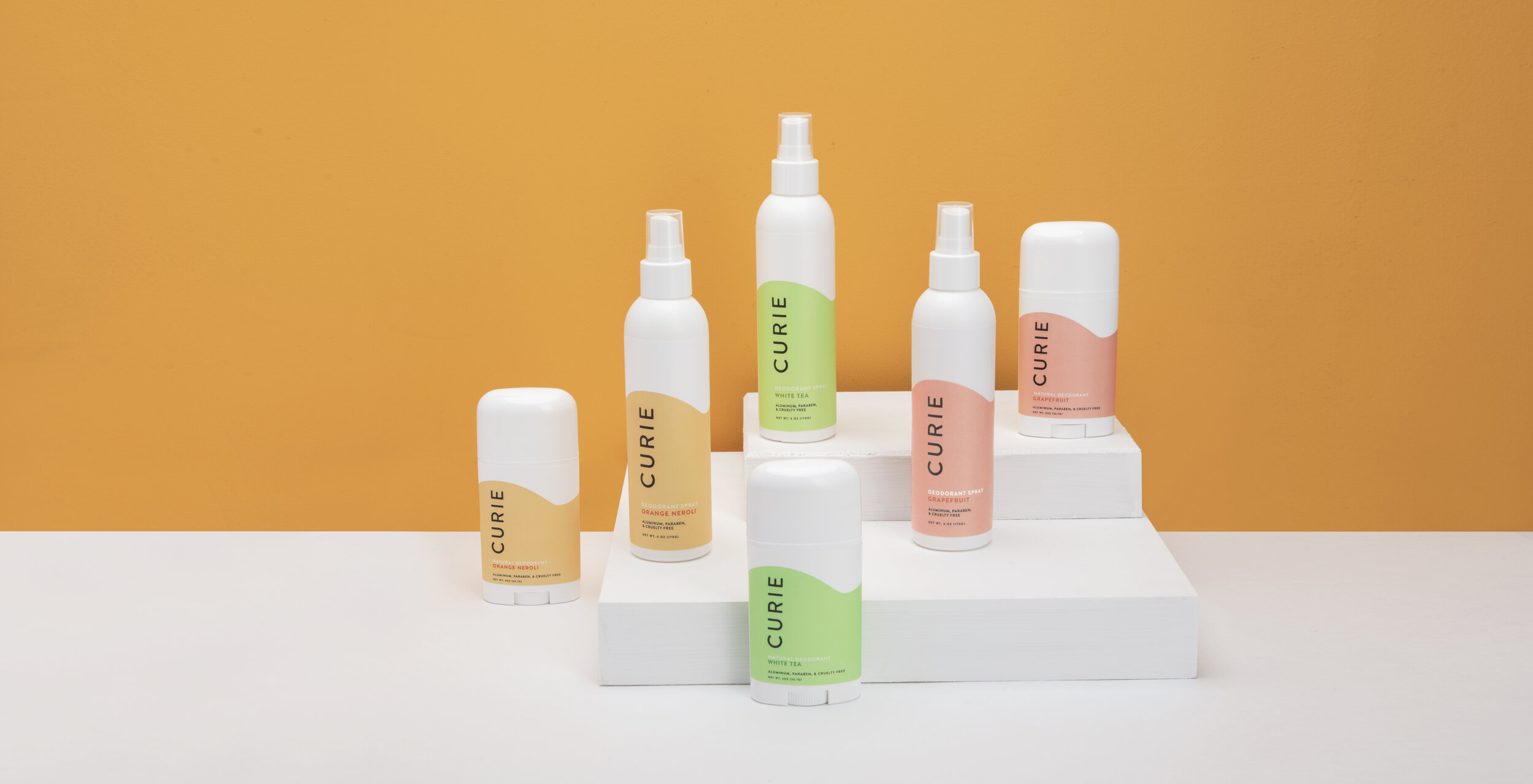
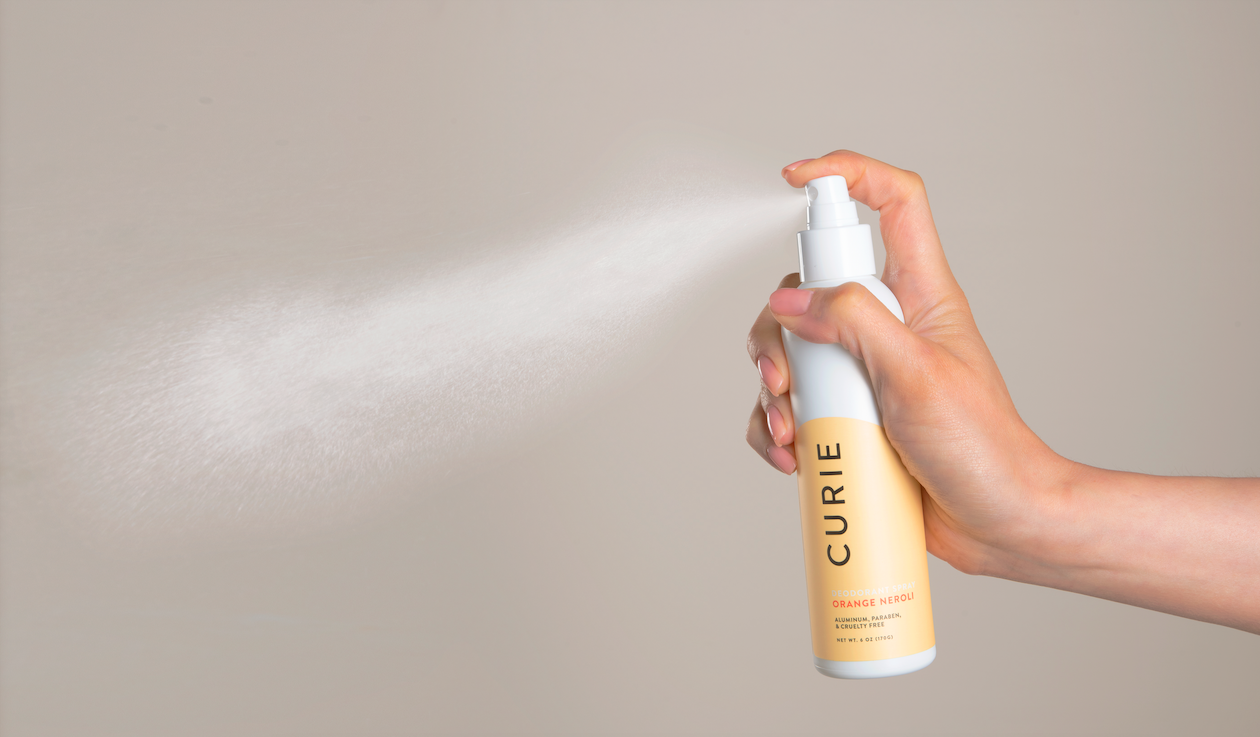
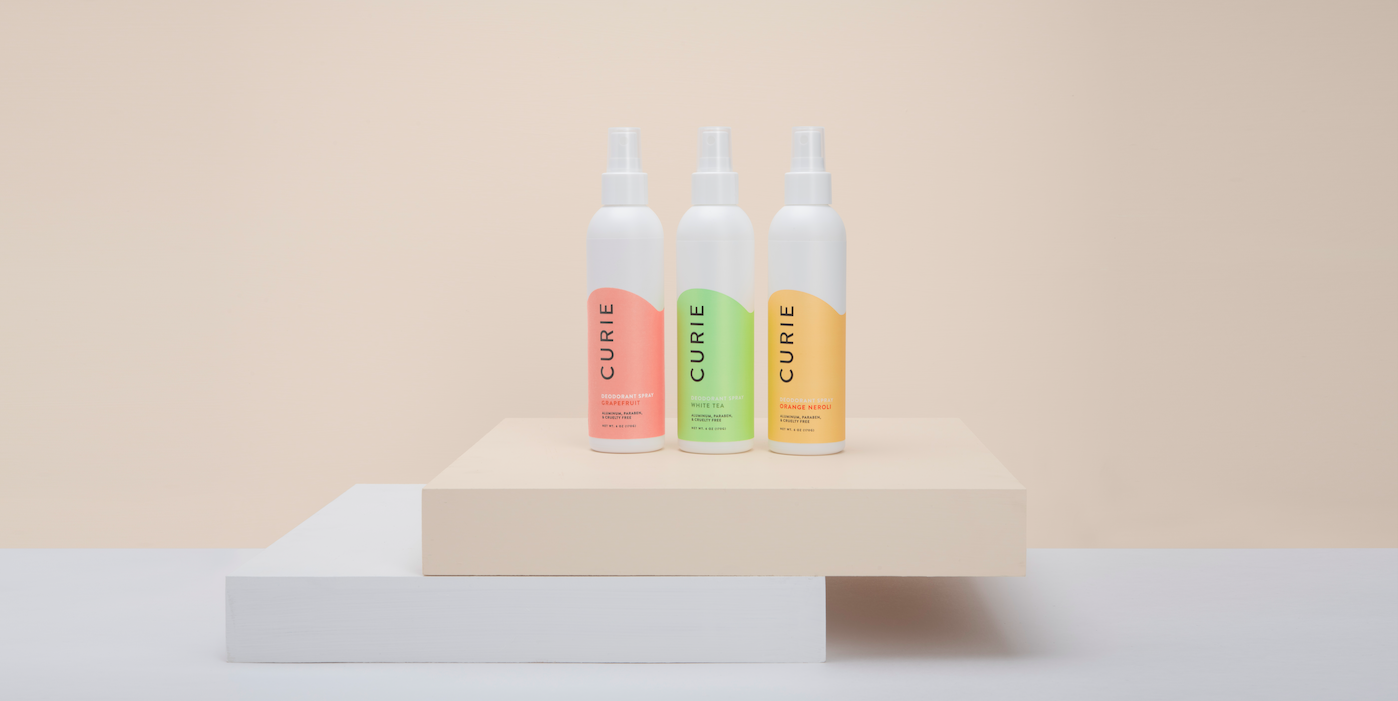
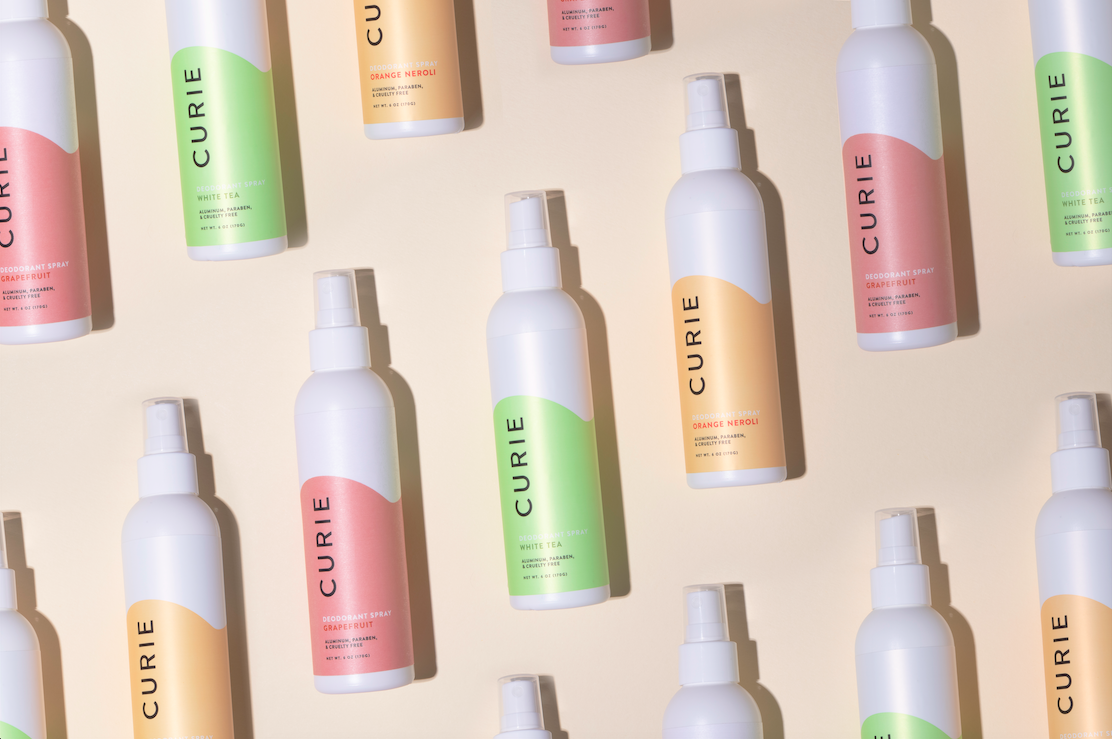
MORE ON THE BLOG
How One 28 Year Old Phenom Got Recruited by Arianna Huffington
And landed her dream job.
At only 28 Callie Schweitzer has a career highlight reel most often reserved for retirement parties. (We think people still have those.) At 24, Forbes called her one of NYC "best networked youngsters." She is also an award-winning journalist whose work has appeared in The New York Times, TIME, The Huffington Post and PEOPLE. Which caught the attention of HuffPo herself, Arianna Huffington who recruited Schweitzer to be the Chief Content Officer at her new life and well-being platform, Thrive Global.
And despite what you've read (or refused to read), Callie knows that this is an incredibly exciting time for journalism. Here's why.
Who: Callie Schweitzer
Where: Chief Content Officer, Thrive Global
Why: Tell us a little about your background. How did you get into the content world?
A: When I was in fourth grade I earned the nickname “Sherlock Schweitzer.” I was always on the lookout for a good story or the clue to one. I’m pretty sure I’d written a library full of books about Beanie Babies and Junie B. Jones by the time I graduated elementary school. But my actual career in the content world really started as a journalism student at the USC Annenberg School for Communication and Journalism. I was the editor-in-chief of a student-run news site called Neon Tommy, and that experience of running a newsroom of over 200 student volunteers kickstarted my entrepreneurial hunger for great stories and how they’re told. I had always wanted to be an investigative reporter, but it was running Neon Tommy that made me see that I cared much more about making sure people got the news than being the person who wrote it. My path since graduation has been at companies of all different sizes -- Talking Points Memo, Vox Media, Time Inc. and now Thrive Global -- but my passion has stayed the same. I want to make sure great content is widely read.
Q: So more importantly, why have you stayed and climbed the ranks in the content world?
A: This is an incredibly exciting time in journalism. The new technology we have available to us -- from VR and AR to voice-enabled technology like Amazon Alexa—just enhances our storytelling abilities. Digital and social media have had a tremendous impact on how new ideas spread. One of the reasons I joined Thrive Global is because of my interest in helping people live better lives. Thrive is all about action and helping you go from knowing what to do to actually doing it. I love that we’re working to help people put content and stories into action and covering some of the defining topics of our time, like our relationship with technology.
"I want to make sure great content is widely read."
Tweet this.
Q: What about your job do you wish people knew?
A: There’s no such thing as a typical day, and I love that. I might go from a meeting with a partner and brainstorming feature ideas to testing a new product and working on our corporate content curriculum, which we use in our corporate trainings and digital learning programs.
Q: I read something last month about the death of the opinion piece. Would love to know your thoughts on that...
A: The opinion piece is alive and well! I think it’s really important to expose yourself to as many perspectives as possible -- especially in today’s world. Studies show that your weakest ties can lead you to news you wouldn’t have discovered yourself. We have to force ourselves to get outside our filter bubbles and learn about parts of the world where people don’t live the way we do. I so believe in following people and news you don’t agree with so that you always have an understanding of someone else’s “why.”
"You always have an understanding of someone else’s 'why.'”
Tweet this.
Q: And where do you think the world of content is heading?
A: I think that the world of content is going to become increasingly personalized. People are looking to be super-served in areas they’re passionate about. Our on-demand world means that people want the content they want when they want it. It’s our job as content providers to make sure we’re finding people where they are, syncing with their habits and delivering them content that helps them live their lives better -- whether that’s informing them, entertaining them or engaging them.
Q: For sites that are publishing a TON of content, how would you suggest readers sift through it?
A: I think it’s really key to find a format that works for you. For me, that’s email newsletters. I’ve been obsessed with them for years. I think they’re amazing containers for curated content delivery. For someone else, it might be a print newspaper or magazine, news apps, Facebook or Instagram.
Q: And how do you as a reader sift through the content online?
A: I really rely on email newsletters for a lot of my topic-specific news -- politics, media, tech, etc. -- but throughout the day I’m visiting Facebook, Twitter, Instagram and various news sites’ homepages to make sure I’m up to date. I’ve really re-invested in visiting homepages directly since the election. I also do a ton of reading on the subway with my favorite read later app, Pocket. And I subscribe to a ton of podcasts to get even more news and information.
Q: How much time do you spend reading content offline?
A: I am a huge print reader. I still subscribe to about 12 magazines ranging from Businessweek and New York Magazine to Vogue and Glamour, and read them every month.
Q: What was the most crucial skill that you brought to your job?
A: I’ve always had an entrepreneurial spirit and an adaptability for rapid change. That’s been important in every role that I’ve had, but especially at a fast-moving startup like Thrive Global.
Q: What was a skill you were able to develop over time?
A: A big part of what we’re focused on at Thrive is the idea that we don’t have different selves for our work lives and personal lives -- that we bring our whole selves with us wherever we go. So one of my favorite things about working here is that we can be free to be open about our “sacred time” -- the time you need each day/week/month to be your best self. I love that my coworkers hold me accountable for mine and I hold them accountable for theirs. I know them as their whole selves -- not just their “work” selves.
Q: Do you think the role of editor/content creator is more important than ever… and of course, the why?
A: The role of editor and content creator is definitely more important than ever. In a world of fake news and filter bubbles, it is so crucial that we have people who are committed to making sure people get a wide range of real news and meaningful content that affects them.
Photo credit: Golden Rule Excelsior












